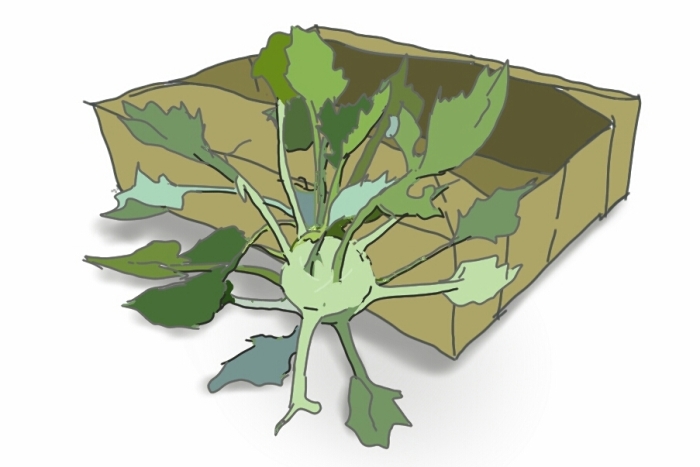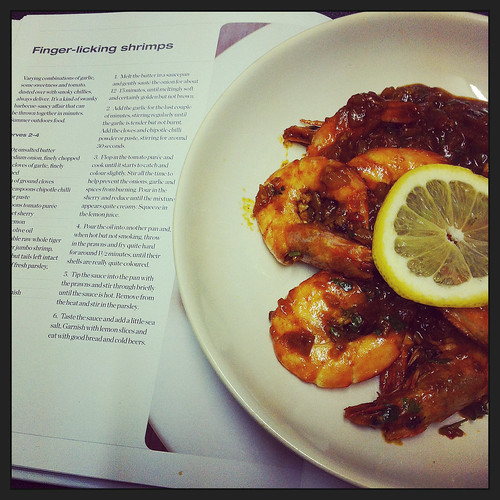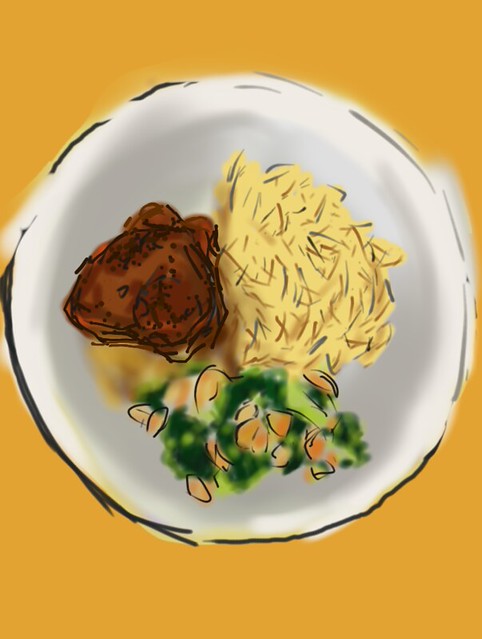I recently signed up to a fortnightly veg box scheme, in an attempt to try to force a bit of planning into our day-to-day lives. After all, they email you in advance to tell you what’s coming ‘fresh from the fields’ that week, so we’ve got four days to plan out what we’re going to do with all this hyper-fresh produce before it rots into a sludgy brown mess in the bottom of the fridge, right?
Well rot it will, unless you get cooking quickly with one of these boxes. Actually I’ve not had any real problems with our current supplier so far, but it’s taken me a long time to jump back on the veg box bandwagon, as other schemes I’ve tried routinely landed me with a whole box that had a (fridge) shelf-life of maybe 3 days at most. I’m sure organic super-fans would jump in here and point out that this proves what evil things must be done to most of the fruit and veg available to us through more prosaic, shop-based shopping, but frankly, I’m a modern working gal, and I quite like a bit of shelf life in my produce. It’s nice to know that the spinach you’d intended for tonight’s dinner will still be useable for tomorrow because you’ve had to work late and can’t be shagged with cooking, or your best friend called with a crisis and suddenly it’s takeaway night because only a pizza will cure that hole in her heart left by that Spanish stud she met on holiday and who just won’t commit, dammit.
Apart from a growing colony of butternut squashes at the back of our fridge which I’m hoping will be keeping us replete in dietary fibre and vitamin A long after the apocalypse has come (as the most long-lasting vegetable in any box it’s always lowest on the cooking-priority list and has yet to be cooked before the next box arrives) we’re doing okay. Key so far has been the tactic of just doing dishes we’d normally cook and throw three extra veg in. This has the added benefit that we need less meat on the plate too, although I’m starting the think we should take out shares in bacon producers, as I’m yet to find a veg that doesn’t taste great just fried with a bit of bacon and then tossed through spaghetti if supper simply has to be a 15 minute affair. Except one that is.
KOHLRABI
It’s the demon of the veg box, it really is. A quick flick through my ample supply of cookbooks shows an endless procession of stir fries and coleslaw-type salads. Pfft. It doesn’t stir-fry as well as pak choi and it makes a more watery and insipid slaw than any other cabbage. I can’t help but wonder if kohlrabi isn’t the veg grower’s equivalent of the Emperor’s new clothes. Somewhere there’s a cabbage farmer pissing himself with laughter that we all fell for this pointless foodstuff.
But I shall persevere. The latest veg box has broad beans which will go into a variation of Hugh Fearnley-Whittingstall’s broad beans on toast. True spinach will bulk out a spicy curry made with lamb shoulder fillets and a minestrone will use up almost everything else and can be our working lunch for several days. And Mr Kohlrabi? One of my cookbooks from the 70s advocates boiling it before stuffing and baking it. I’m going to give it a whirl, although I might not boil it for the full 30 minutes recommended in the recipe. Vitamins? What vitamins?

 Unlike traditional pastry made with lard, this souped-up hot water crust dough uses the fat from the magnificent Iberico pig, which you can get from certain posh food retailers these days. It is super-soft, so really needs the overnight chilling to firm it up, and I prefer to crimp my pastry after chilling, so you get a neater finish. Spend time making sure the seal is right, smearing edges with a damp finger if necessary, as any cracks will let precious juices seep out. The stock recipe makes twice what you need but can’t really be made in a smaller batch, freeze the rest for another pie or use it to make a fabulous pea & ham soup.
Unlike traditional pastry made with lard, this souped-up hot water crust dough uses the fat from the magnificent Iberico pig, which you can get from certain posh food retailers these days. It is super-soft, so really needs the overnight chilling to firm it up, and I prefer to crimp my pastry after chilling, so you get a neater finish. Spend time making sure the seal is right, smearing edges with a damp finger if necessary, as any cracks will let precious juices seep out. The stock recipe makes twice what you need but can’t really be made in a smaller batch, freeze the rest for another pie or use it to make a fabulous pea & ham soup. controversy – he doesn’t swear obnoxiously a la Gordon, have high-profile relationship dramas like John Burton-Race, or even campaign aggressively as Hugh does – Valentine Warner seems to incite quite strong love/loathe feelings amongst cookbook readers. Personally I like his ethos (globetrotting but with British ingredient passion), but not so much the personality (bit of class war chippyness on my part). He’s certainly not a man I’d pull off a shelf for the love of his face, so I’m baffled by the choice of a cover with a picture of the man licking crabby fingers as if he’s the Y chromosome’s answer to Nigella, but I know a lot of women of a certain age who’d disagree with me.
controversy – he doesn’t swear obnoxiously a la Gordon, have high-profile relationship dramas like John Burton-Race, or even campaign aggressively as Hugh does – Valentine Warner seems to incite quite strong love/loathe feelings amongst cookbook readers. Personally I like his ethos (globetrotting but with British ingredient passion), but not so much the personality (bit of class war chippyness on my part). He’s certainly not a man I’d pull off a shelf for the love of his face, so I’m baffled by the choice of a cover with a picture of the man licking crabby fingers as if he’s the Y chromosome’s answer to Nigella, but I know a lot of women of a certain age who’d disagree with me.












